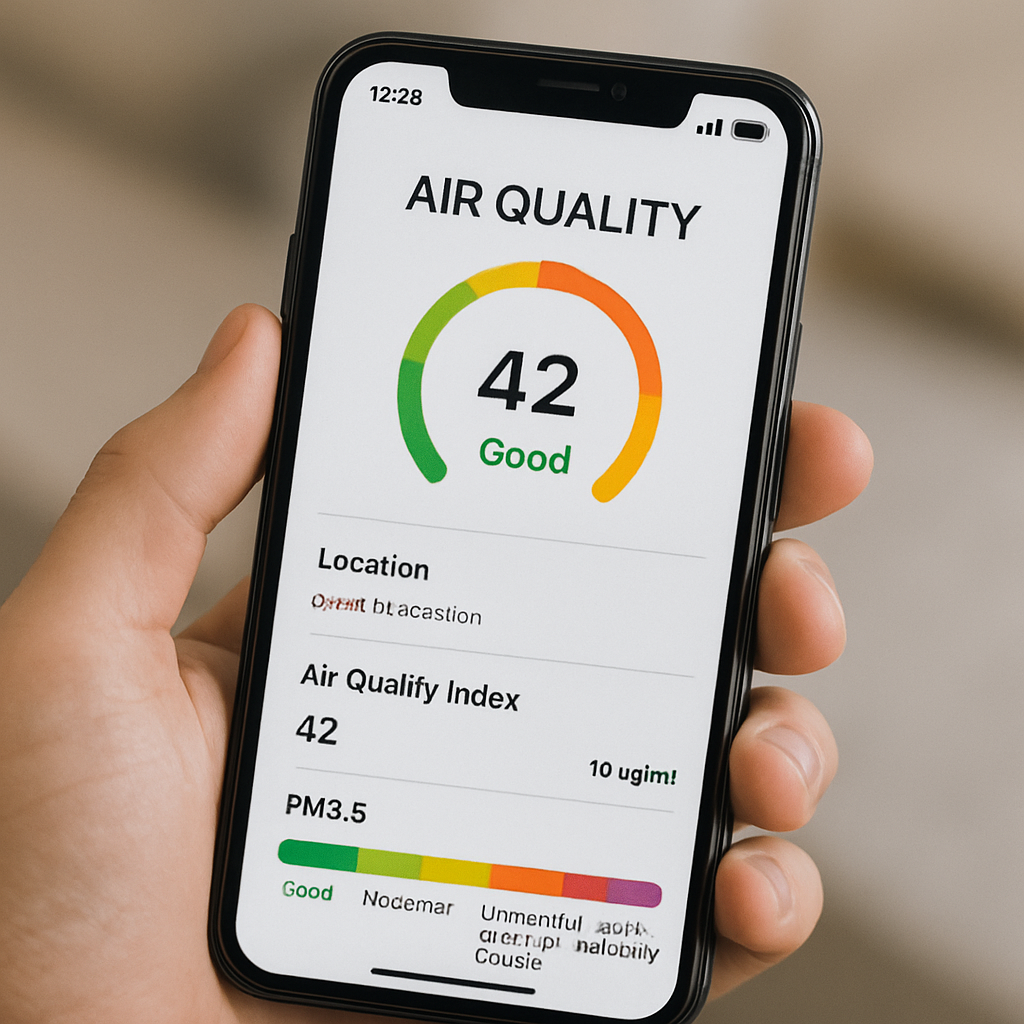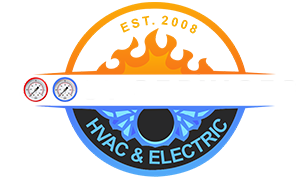Monitoring air quality in Los Angeles is crucial for health and well-being. The city often faces challenges with air pollution. Understanding How to Monitor Air Quality can help you make informed decisions.
Air quality affects everyone, from community-based entrepreneurs to working-class families. Knowing the air quality index (AQI) helps you plan daily activities. It also ensures you take necessary precautions.
Los Angeles has unique air quality issues due to its geography and traffic. Staying informed about these factors is essential. It helps you protect yourself and your loved ones.

There are many tools and resources available to monitor air quality. These include apps and government websites. They provide real-time data and alerts.
By staying informed, you can contribute to a healthier community. You can also advocate for better air quality policies.
Table of Contents
Understanding Air Quality and the AQI in Los Angeles
Air quality in Los Angeles is measured using the Air Quality Index (AQI). The AQI translates data from air monitors into a simple scale. This scale helps residents understand pollution levels.
The AQI ranges from 0 to 500, with lower numbers signifying better air quality. It has different categories, each indicating a specific level of health concern. These categories range from “Good” to “Hazardous.”
Key pollutants measured by the AQI include:
- Ground-level ozone
- Particulate matter (PM2.5 and PM10)
- Carbon monoxide
- Sulfur dioxide
- Nitrogen dioxide
Los Angeles often struggles with high AQI levels due to traffic and industry. Understanding these sources is essential for mitigating exposure. Awareness of weather conditions can help predict changes in air quality.
Monitoring AQI helps you decide when to limit outdoor activities. It is especially crucial for vulnerable groups, like children and the elderly. Understanding air quality helps you plan for safety.
Real-Time Air Quality Data: Where to Find It
Staying informed about air quality in Los Angeles is vital. Several sources provide up-to-date information. Checking these resources can help protect your health and plan your day.
Government websites are reliable places to start. The Environmental Protection Agency (EPA) offers real-time AQI information. You can also use local resources, such as the South Coast Air Quality Management District (SCAQMD).
Apps simplify accessing air quality data on the go. Many apps offer push notifications for air quality alerts. Here are popular options:
- AirVisual
- Plume Labs’ Air Report
- EPA’s AQI app
Local news outlets also report current air quality conditions. They often provide forecasts, helping residents anticipate changes. Monitoring these sources ensures you’re always aware of air quality shifts.
Taking advantage of these tools can minimize health risks. It empowers both community members and business owners. Keeping informed helps protect yourself and others.
Why Does LA Have Bad Air Quality? Common Causes and Trends
Los Angeles often struggles with poor air quality. Various factors contribute to this issue. Understanding these can help residents and businesses take action.
Heavy traffic in LA significantly affects air quality. Emissions from vehicles are a major source of air pollution. This is especially true during rush hours and on busy freeways.

Industrial activities also play a role. Factories and refineries release pollutants into the air. These increase levels of harmful particles and gases.
Other contributors include:
- Weather patterns trapping pollutants
- Wildfires releasing smoke
- Local geography affecting air dispersion
Recognizing these causes highlights the importance of collective action. Awareness can lead to efforts that mitigate these issues. Community involvement is key to improving air quality trends over time.
Tools and Apps for Monitoring Air Quality in LA
Staying informed about air quality in LA is crucial. Luckily, several tools and apps make this easier. They offer up-to-date information right at your fingertips.
Apps like AirVisual and Plume Labs are popular choices. These provide real-time air quality data and forecasts. Users can easily check the air quality index (AQI) for their location.
Features to look for in these tools include:
- Real-time updates and alerts
- Detailed pollutant information
- Personalized health advice
- Location-based forecasting
In addition to apps, websites like AirNow offer comprehensive data. These platforms give a broader view of air quality trends. Accessing this information helps residents plan outdoor activities. Having reliable data ensures that you stay informed and safe.
How Air Quality Impacts Health and Daily Life
Air quality plays a significant role in our health. Poor air quality can trigger respiratory issues. It impacts vulnerable groups such as children and the elderly more severely.
Daily activities often suffer due to poor air. For instance, outdoor exercises become risky. Those with pre-existing conditions might experience exacerbations.
A compromised air environment affects not just health but also well-being. It can influence mood and productivity at work. Long-term exposure poses risks like heart disease.
Common health impacts include:
- Respiratory irritation
- Increased asthma attacks
- Fatigue and headaches
- Higher risk of cardiovascular problems
Understanding these health links is essential. By staying informed, you can make better lifestyle choices. Protecting yourself and your loved ones becomes manageable. Awareness prompts necessary changes in daily routines.
Tips to Protect Yourself and Your Community
Protecting yourself from poor air quality starts with awareness. Stay updated by checking air quality reports daily. This helps you plan outdoor activities accordingly.
Using an air purifier at home can significantly reduce indoor pollutants. Opt for HEPA filters to trap fine particles. Keep windows and doors closed on days with poor air quality.

Participate in community efforts to improve air quality. Engage with local initiatives and support policies aiming for sustainable practices. Your involvement can drive significant positive change.
Consider these protective measures:
- Wear masks during high pollution days
- Plant trees or create green spaces
- Use public transportation or carpool
- Advocate for stronger environmental regulations
Implementing these strategies benefits both individuals and communities. By taking small steps, everyone can contribute to a healthier environment.
How Local Businesses and Residents Can Help Improve Air Quality
Local businesses can play a crucial role in enhancing air quality. By adopting eco-friendly operations, they set a positive example. Implementing energy-efficient practices reduces pollution and conserves resources.
Residents contribute by making sustainable choices in daily life. Opting for bicycles or walking short distances helps reduce emissions. Simple actions collectively make a substantial impact.
Get involved in community projects aimed at air quality improvement. Support local policies promoting sustainability. Here are some ways businesses and residents can contribute:
- Use clean energy sources
- Reduce waste and recycle regularly
- Promote green building designs
- Support public transportation expansion
These efforts collectively enhance air quality, benefiting the entire community. Working together, we can create a healthier environment for future generations.
Stay Informed and Take Action: Your Next Steps
Staying informed about air quality is essential for making smart decisions. Use available resources and tools to keep abreast of air quality changes. This knowledge helps you plan your day better, especially when outdoor activities are involved.
Encourage others to join in the effort to improve air quality. Share information with friends, family, and neighbors. Getting involved in local initiatives amplifies your impact. Together, communities can drive significant change towards cleaner air and healthier lives.
FAQ — How to Monitor Air Quality
What is AQI and why does it matter in Los Angeles?
The Air Quality Index (AQI) translates pollution levels into a 0–500 scale so you can quickly understand health risks. LA’s traffic, industry, and wildfire smoke can push AQI higher, especially for ozone and PM2.5.
Which pollutants should I track in LA?
Focus on PM2.5 (smoke and fine particles) and ozone in summer. PM10, nitrogen dioxide, sulfur dioxide, and carbon monoxide are also relevant but usually secondary for daily decisions.
What are the easiest ways to check outdoor air quality?
Use trusted AQI apps or websites, set location-based alerts, and compare multiple sources to confirm spikes, especially during wildfire season.
Which tools and networks are popular for LA air monitoring?
Many residents check official government feeds and community sensor networks. Cross-referencing both gives a fuller picture across neighborhoods and microclimates.
How often should I check AQI during wildfire season?
Check in the morning, mid-day, and evening, and enable push alerts. Conditions can change quickly with wind shifts and temperature inversions.
Can neighborhood sensors be trusted?
They are useful for hyperlocal trends but may have calibration differences. Compare neighborhood sensors with official readings and look for averages or “corrected” values when available.
How can I monitor indoor air quality?
Use a home monitor that reads PM2.5 and optionally CO2, humidity, and temperature. Track trends over days to see how ventilation, cooking, or open windows affect indoor air.
Where should I place an indoor air quality monitor?
Place it at breathing height in a frequently occupied room, away from direct vents, windows, humidifiers, stoves, and candles to avoid false spikes.
What readings suggest I should take action indoors?
Take action if PM2.5 rises above healthy guidance for more than brief peaks, CO2 stays elevated during occupancy, or humidity is consistently too high or too low for comfort.
What steps help keep indoor air cleaner when AQI is poor?
Run an HVAC system on recirculation with an appropriate MERV filter, use a HEPA air purifier sized for the room, close windows, and minimize indoor pollution like smoking or high-heat pan searing.
How do I pick a HEPA purifier for my home?
Match the device’s clean air delivery rate (CADR) to your room size, choose a true HEPA filter, and plan for replacement filters. Run it on higher settings during smoke events.
What HVAC filter should I use for smoky days?
Use the highest MERV filter your system can handle comfortably, often MERV 11–13. Replace more frequently during prolonged smoke to maintain airflow and filtration.
How can I set up practical air quality alerts?
Enable app notifications for your ZIP code, choose thresholds relevant to your health, and schedule daily summaries. Add alerts for wind changes during wildfire season.
What outdoor activity adjustments should I make based on AQI?
Reduce intensity and duration as AQI worsens. Sensitive groups should move activities indoors earlier, and everyone should consider masks when AQI is high.
Does weather forecasting help predict AQI in LA?
Yes. Temperature, wind, and inversions influence ozone and smoke dispersion. Watching forecasts helps you plan errands and workouts for cleaner hours of the day.
How can I tell if my home is well sealed against outdoor smoke?
If indoor PM2.5 rises in tandem with outdoor spikes despite windows closed, you may have leaks. Track indoor versus outdoor trends and consider weatherstripping or improving filtration.
What quick checklist should I follow on poor AQI days?
Use this simple list:
- Check AQI in the morning and set alerts
- Close windows and switch HVAC to recirculation
- Run a HEPA purifier in your main room
- Avoid indoor smoke sources and strong aerosols
- Reschedule outdoor exercise or reduce intensity

